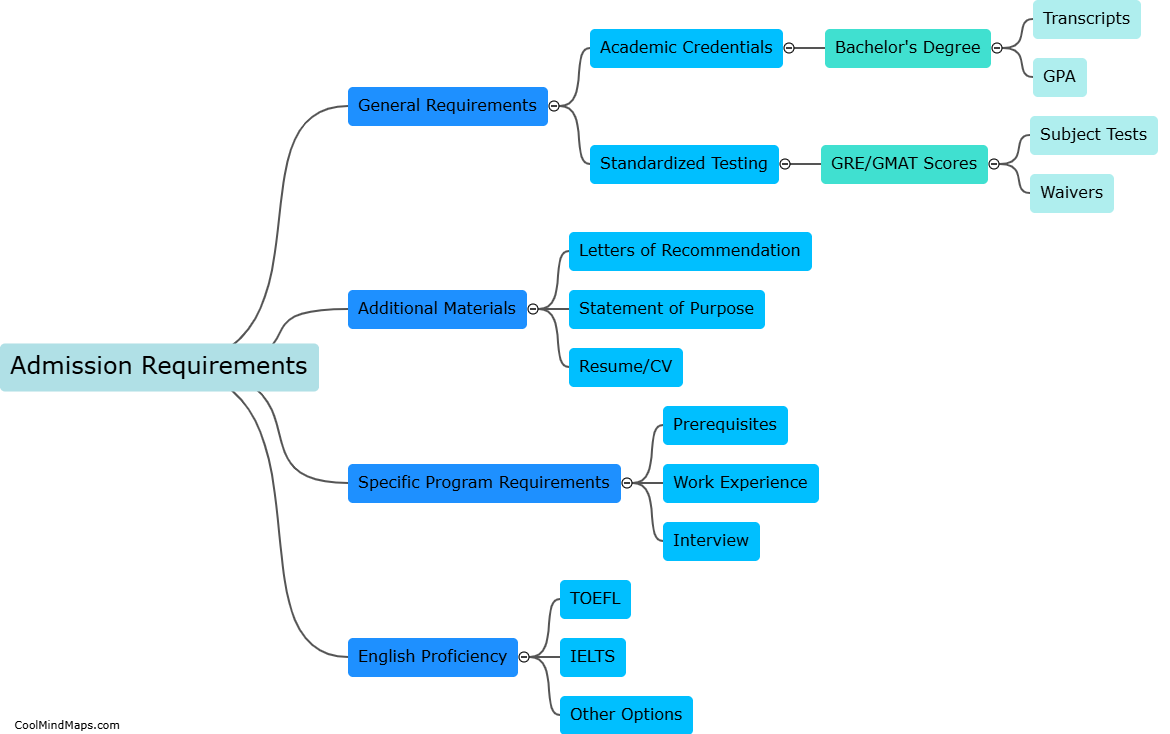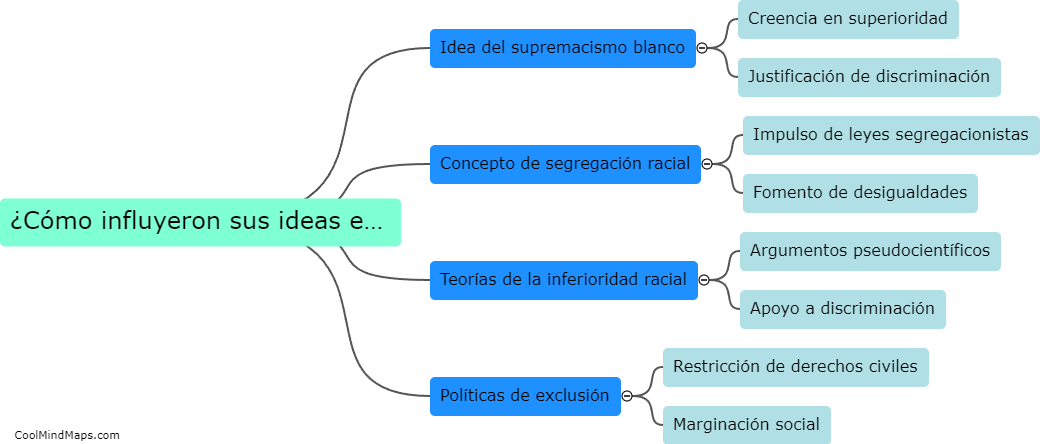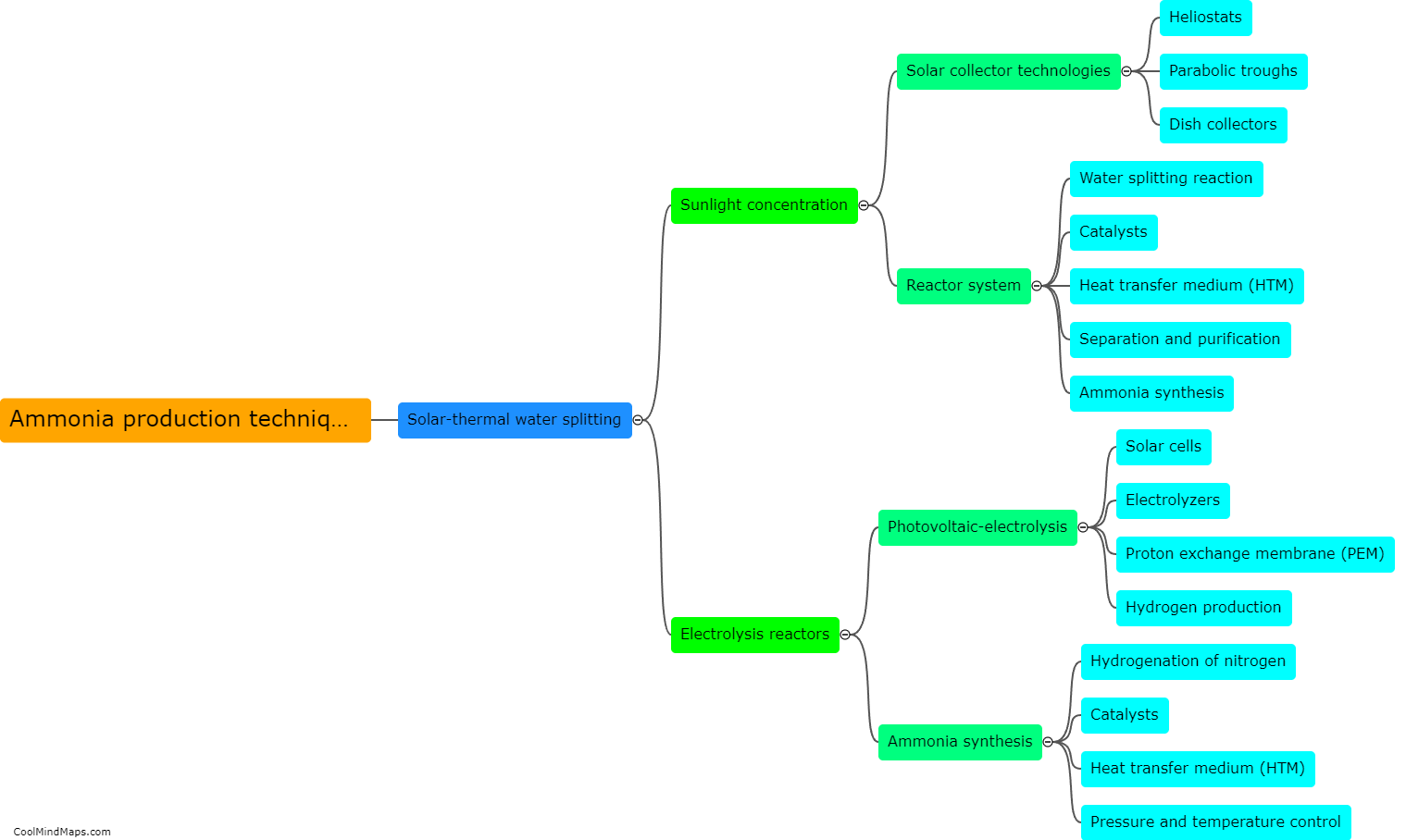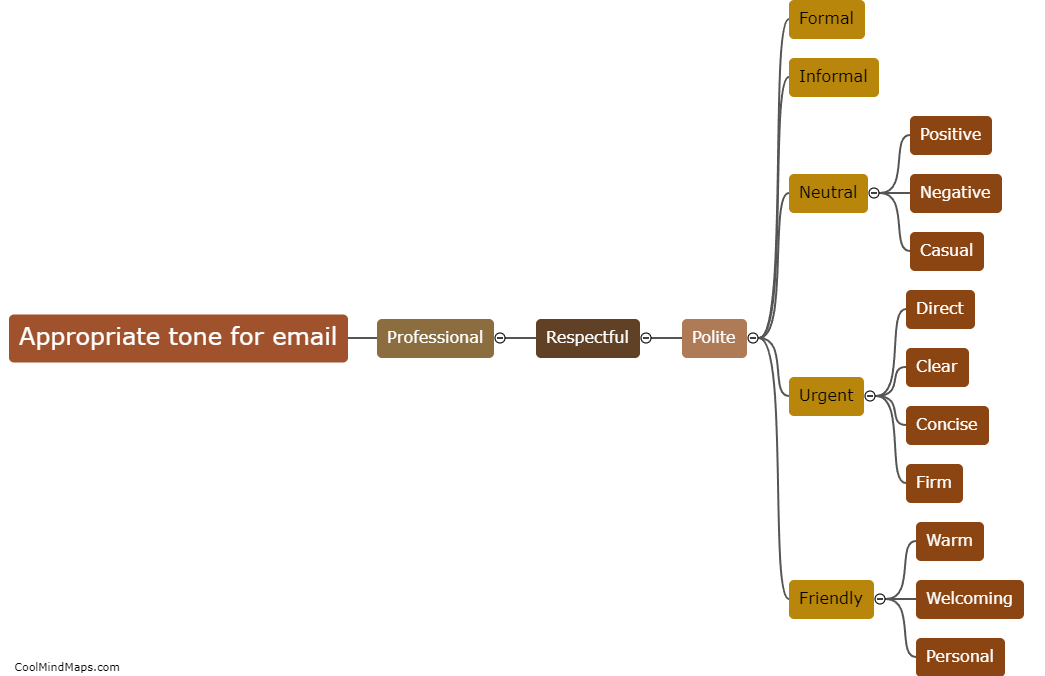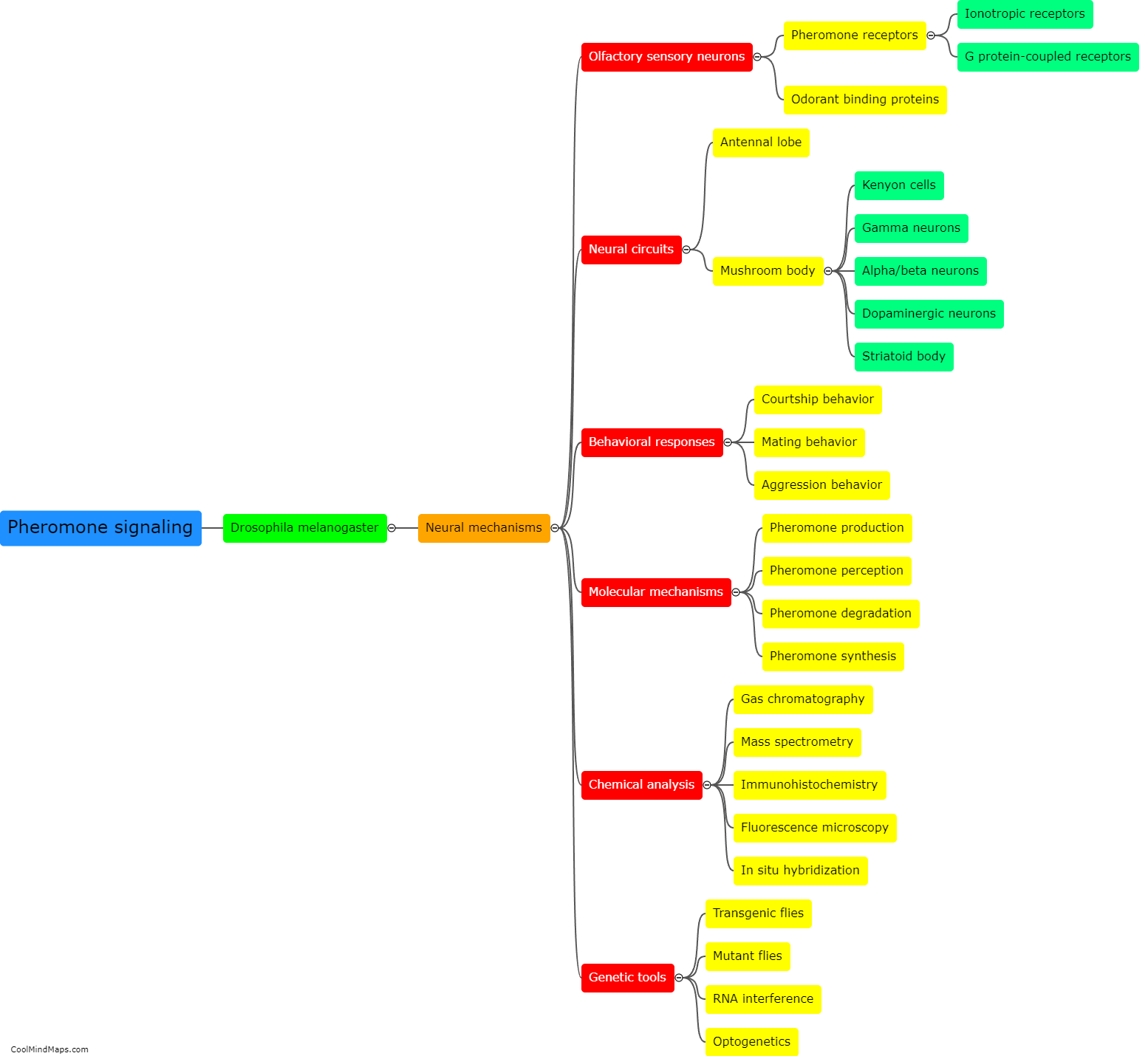How do fruit flies use pheromones for signaling?
Fruit flies, known scientifically as Drosophila melanogaster, utilize pheromones for various aspects of their social behavior and communication. These small insects release and detect pheromones to convey information about their sex, mating availability, aggression, food sources, and territory. The male fruit fly, for instance, releases a sex pheromone called cis-vaccenyl acetate (cVA) onto the female's cuticle during courtship. This signals his reproductive intent and inhibits other males from pursuing the female. Additionally, female fruit flies release a different pheromone, called methyl laurate, which attracts males and acts as a mating attractant. Pheromones are detected via sensory organs called chemosensory receptors, and understanding their role in fruit fly signaling provides insights into the intricate social behaviors of these model organisms.

This mind map was published on 6 September 2023 and has been viewed 108 times.

